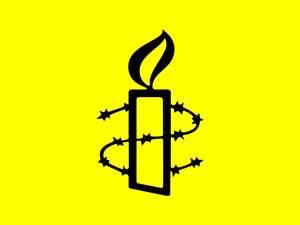Ilankai Tamil Sangam30th Year on the Web Association of Tamils of Sri Lanka in the USA |
|||
 Home Home Archives Archives |
Sri Lanka 2011by Amnesty International, May 24, 2012
Report, including archives of previous years. The government continued to arbitrarily detain, torture or ill-treat people and subject people to enforced disappearance. It failed to address most instances of impunity for violations of human rights and humanitarian law. The government rejected repeated allegations of war crimes committed by both sides of the conflict that ended in 2009, prompting Amnesty International to reiterate calls for an independent international investigation. BackgroundSri Lanka continued to rely on security laws and a Internally displaced peopleAlmost 400,000 conflict displaced people returned to the north by the end of 2011, but many of them continued to live in insecure conditions with poor housing and poor access to health care and education. Some 16,000 people remained in government-run camps. The authorities planned to close remaining displacement camps and relocate about 5,500 individuals from areas that remained under military control in Mullaitivu to a jungle location in Kombavil. Advocates for the displaced voiced concerns that relocation would not be voluntary. Violations by government-allied armed groupsGangs linked to the security forces and government-aligned political parties, including the Eelam People’s Democratic Party, Tamil People’s Liberation Tigers and the Sri Lanka Freedom Party, were blamed for robberies, abductions, rapes, assaults and murders in Jaffna, eastern Sri Lanka, and increasingly in other parts of the country. Political activists, returning displaced people, and former LTTE members were targets. Enforced disappearancesEnforced disappearances continued to be reported, and thousands of cases from earlier years remained unresolved. The government failed to ratify the International Convention against enforced disappearance. In January, witnesses appeared before Sri Lanka’s Lessons Learnt and Reconciliation Commission (LLRC) in Mannar and Madhu, trying to find loved ones seen surrendering to the army in May 2009.
The Sri Lankan Police Department reported in July that 1,700 people had been abducted since 2009, most of them for ransom. Arbitrary arrests and detentionsThe government acknowledged in November that 876 adults remained in administrative detention under the PTA; 845 were Tamil men and 18 were Tamil women. These detainees were among nearly 12,000 alleged LTTE members who surrendered or were captured by the army and then detained for months or years without charge in the aftermath of the conflict. People detained for “rehabilitation” were gradually released in batches (about 1,000 were held at year’s end); those released remained under military surveillance, and were reportedly subjected to harassment by the authorities.
Torture and other ill-treatmentTorture and other ill-treatment of criminal suspects and those detained on suspicion of links to the LTTE remained widespread, despite laws prohibiting torture. Rape and other gender-based violence amounting to torture were not taken seriously by the authorities. Sexual violence went largely under-reported and, where reported, was poorly investigated. Excessive use of forceOn 30 May, police fired tear gas and live ammunition at demonstrating workers and trade unionists in the country’s largest export processing zone. Hundreds of demonstrators and police were reported injured; 21-year-old Roshan Chanaka was killed. President Rajapaksa ordered an inquiry. The Inspector General of Police resigned following the incident; several other high-ranking police officers were transferred. Deaths in custodyDeaths in police custody persisted, many of them under suspicious circumstances. Police often claimed that victims were killed trying to escape.
Lack of accountabilityThe government failed to adequately investigate or prosecute most alleged violations of human rights and humanitarian law, including those committed in the final phase of the armed conflict, and rejected the findings of the UN Secretary-General’s Panel of Experts on Accountability in Sri Lanka. The Panel concluded that there were credible allegations that war crimes and crimes against humanity had been committed by both sides. It found that the LLRC, touted by officials as a sufficient accountability mechanism to address wartime events, was “deeply flawed” and was not adequately independent or impartial. It recommended that the Secretary-General establish an independent investigation into the allegations and order a review of UN actions on Sri Lanka. The UN Human Rights Council failed to act on its recommendations. The LLRC’s final report, made public on 16 December, acknowledged serious human rights problems in Sri Lanka, but fell short of fully addressing allegations of war crimes and crimes against humanity committed during the final phases of the conflict. It took the government’s responses uncritically, reinforcing the need for an independent international investigation. Sri Lankan officials, including the country’s President and senior diplomats, faced complaints in Swiss, German and US courts that they were responsible for murder, torture and military attacks on civilians.
Human rights defendersSuppression of peaceful dissent remained common. Human rights defenders who engaged in international advocacy or interacted with international NGOs or diplomats were portrayed in the state media as traitors and subjected to anonymous threats and smear campaigns.
Freedom of expression – journalistsThe authorities attacked and censored media workers and outlets, and failed to provide accountability for attacks on journalists. On 7 November, the government blocked websites whose content was deemed “injurious” to Sri Lanka’s image, and announced that any website featuring information about Sri Lanka should register with the Ministry of Mass Media and Information or face potential legal action.
|
||
|
|||
